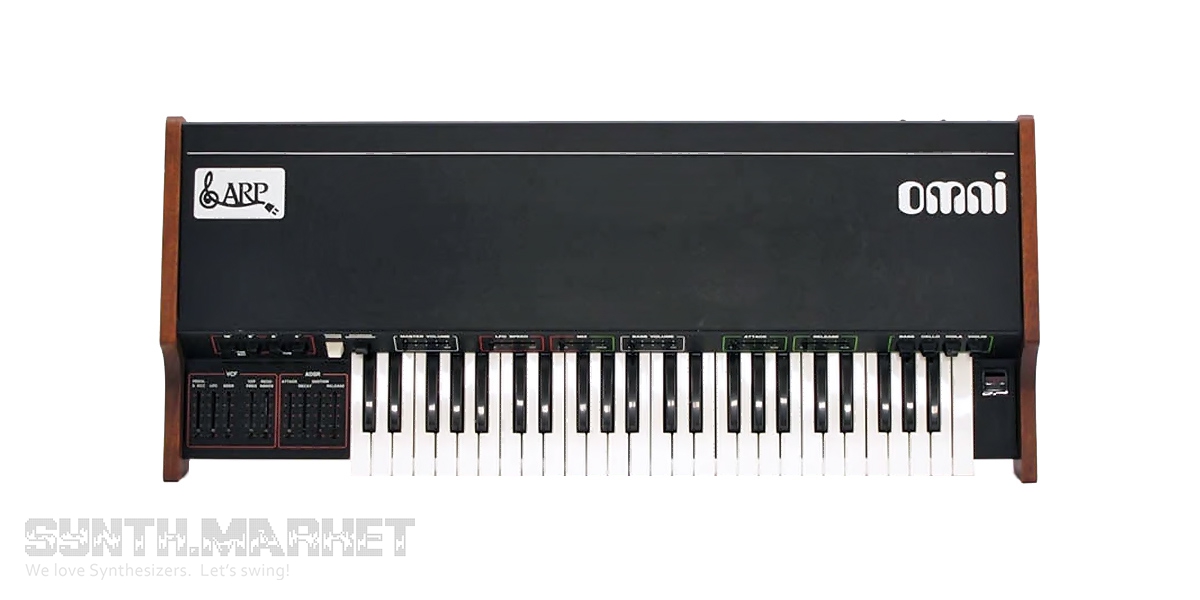The idea of creating a universal synthesizer - the first attempt was Solina String Synthesizer - didn’t leave the developers of ARP. The new incarnation was Omni, which operated as three independent synthesizers simultaneously. For the user quite few settings were available, in fact it's a preset synthesizer. But the presets are configured so successfully that Omni became one of the most successful synthesizers ARP ever made.
But unlike Solina String Synthesizer, which contained two real independent synthesizers, Omni is built on a more innovative (and, which is important, cheaper) technology: the master oscillator generates a meander of high frequency (500 kHz), which is produced by dividing into twelve notes of the upper octave, which in their turn are divided in 2, 4, etc. for constructing the sound of the lower octaves (the divide down principle, which was widely used in electric organs). The master oscillator signal is transformed into a sawtooth signal to build the bass synth sound. Thus, Omni comprises a polyphonic string synthesizer, a polyphonic synthesizer (uses a rectangular wave) and a monophonic bass synthesizer.
The string section contains four presets that can work simultaneously:
Violin - polyphonic.
Viola - polyphonic.
Cello - monophonic, available for the first two octaves.
Bass - monophonic, available for the first two octaves.
For the string section, attack time and release settings (AR envelope generator) are available, and the volume settings are available for the bass. The signal of this section passes through a non-switchable three-section phaser-chorus effect (BBD MN3002).
The sound of the synthesizer section and the bass synthesizer goes through the VCF, VCA and have an independent envelope generator.
As a filter, the ARP4075 module is used - a four-stage low-pass filter with a cutoff slope of 24 dB per octave. Adjustment is available for the cutoff frequency, resonance, modulation depth by the envelope generator and LFO.
The voltage controlled amplifier is subjected to the envelope generator.
The envelope generator has independent ADSR parameter settings, but is subordinated to the AR string envelope generator, which influences the master VCA.
Modulatable LFO has a frequency adjustment, which can be set in the range from 0.1 to 20 Hz. The generated triangular waveform is used to modulate the phaser-chorus effect (which can be turned off), rectangular - to modulate the VCF.
The signal of the synthesizer and string sections is mixed in the master mixer, where the balance and master volume are also set.
Due to the use of imperfect components, the original Omni units require a fairly serious upgrade before exploitation. Some synthesizer issues:
Power Supply. Due to poor stabilization of output voltages, tantalum capacitors fail to function over time – they are sensitive to this kind of pulsating.
Chips in the section of the note generating. The imperfect chips of the first-generation were used, which eventually break down.
ARP Omni was used by Tangerine Dream, The Car, Kraftwerk, Modern English, Trouble Funk, New Order and many others.















